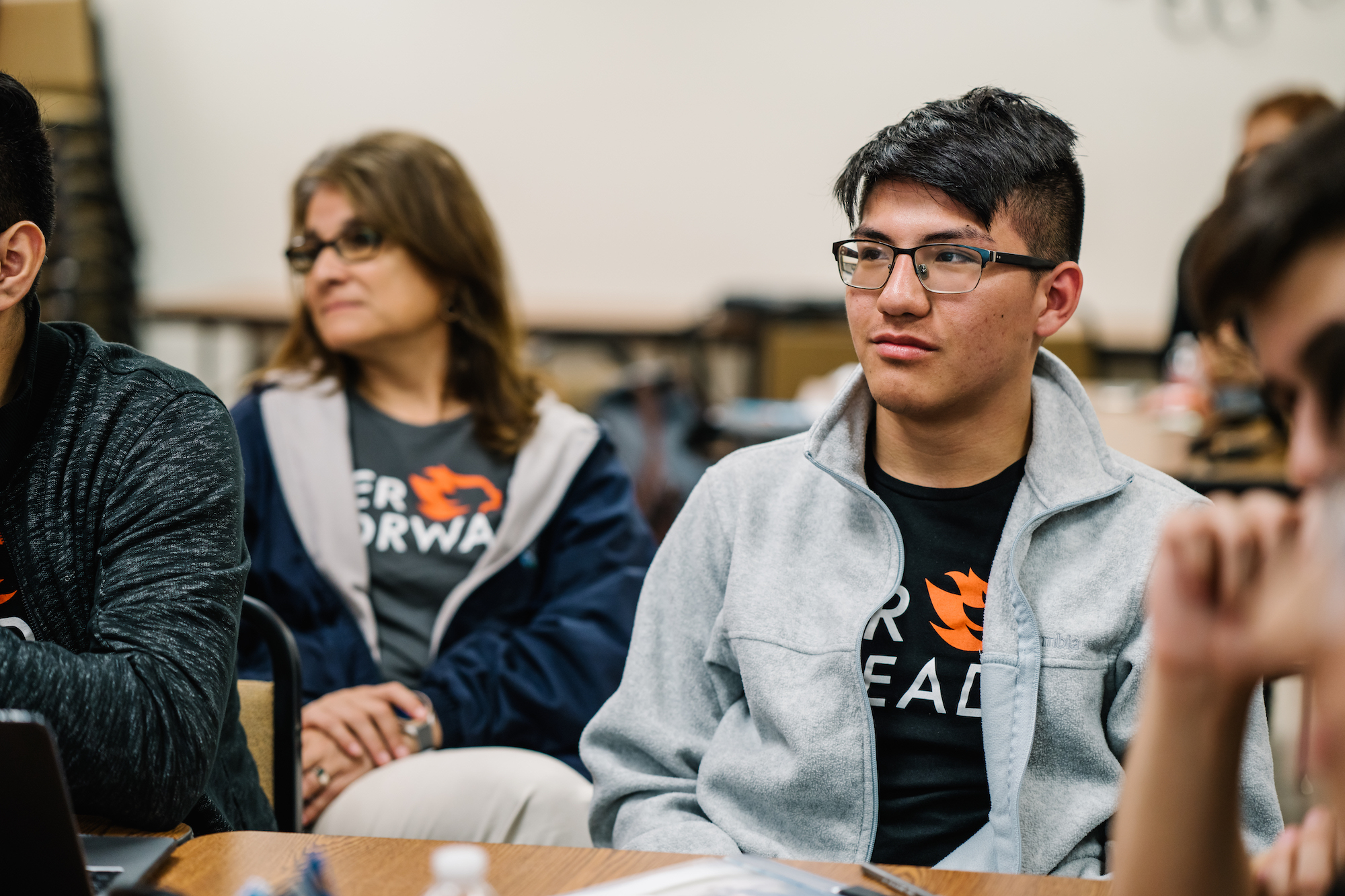THE RIO GRANDE VALLEY

harvesting citrus, bell peppers, broccoli and cauliflower in the Rio Grande Valley of Texas, sugar beets in Colorado and onions in Michigan. During her family’s annual trek to Ohio for work, she picked tomatoes by day and cleaned and peeled them for the Campbell Soup Company by night, squeezing in school as a migrant student where she could. To help support her family full-time, she dropped out in the 10th grade and didn’t return to school until she married, more than a decade later.
“Their faith is obvious in their actions and the hope and positive view of the world they bring to their work. Despite the poverty here and how hard things can be, we view the world through a love of life, through a prism of colors. That spirit of joy and love is why we sing De Colores.”
With the interventions of RGV FOCUS (the region’s cradle-to-career initiative) and LUPE, and with the collaboration of institutions of higher education, today the Rio Grande Valley’s undocumented youth are able to have the access and support they need to achieve their college dreams.
More than a century after the Texas State Constitution called for the creation of a “university of first class” in 1876, Latinos did not enjoy equal access to higher education in the state.
In 2003, CFT launched the Texas High School Project to introduce an early college high school model to the state of Texas. Its goal was to address the low rate of low-income students of color earning postsecondary credentials. Chris Coxon of Educate Texas says the impact of this statewide initiative in the Valley was to decrease the dropout rate and increase college enrollment; however, “it had a very narrow scope,” he says. He explains that the Texas High School Project understood in 2011 that if it was going to have a big impact in such a large state, it would need to select and focus on regions. Ultimately it selected two, North
Texas and the Valley.
where he is a 23-year veteran and an RGV FOCUS partner. “Of course, it does, but you can’t get stuff done by having a bunch of people feeling sorry for themselves.” Ninety-two percent of students in McAllen are Latino, 72 percent low income. The district reflects the population of the entire Valley. “We have always tried to make sure ethnicity doesn’t dictate achievement.”
says Valdez-Cox. In an article entitled “In the Rio Grande Valley, Death has Become a Family Affair,” the New York Times reports that the death rate for those infected by the virus in the Valley is five percent when it has been at two percent nationally.6 “It’s hit really hard,” Valdez-Cox says. “That points to one thing: the persistent inequality that leads to poverty.”
That point is reinforced by McAllen’s superintendent, who is clear that dreams don’t come true if people in the Valley sit around feeling sorry for themselves. Instead, he says, the lives of people in the Valley are animated by purpose and effort.
Read the Full
Rio Grande Valley Story

